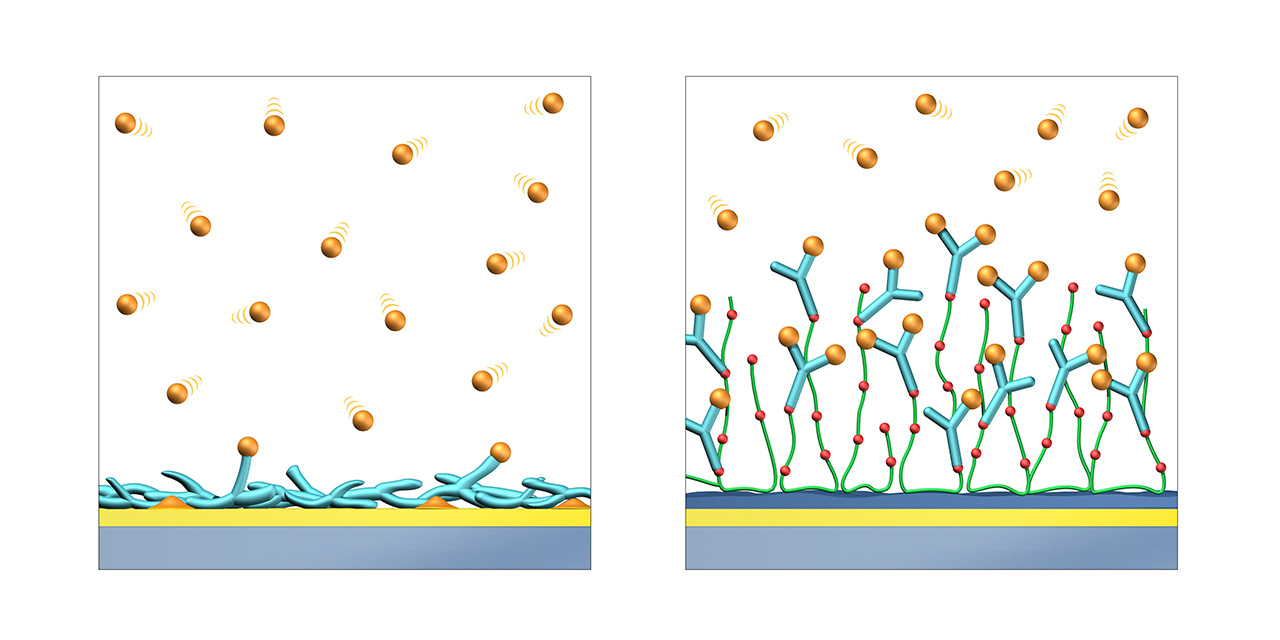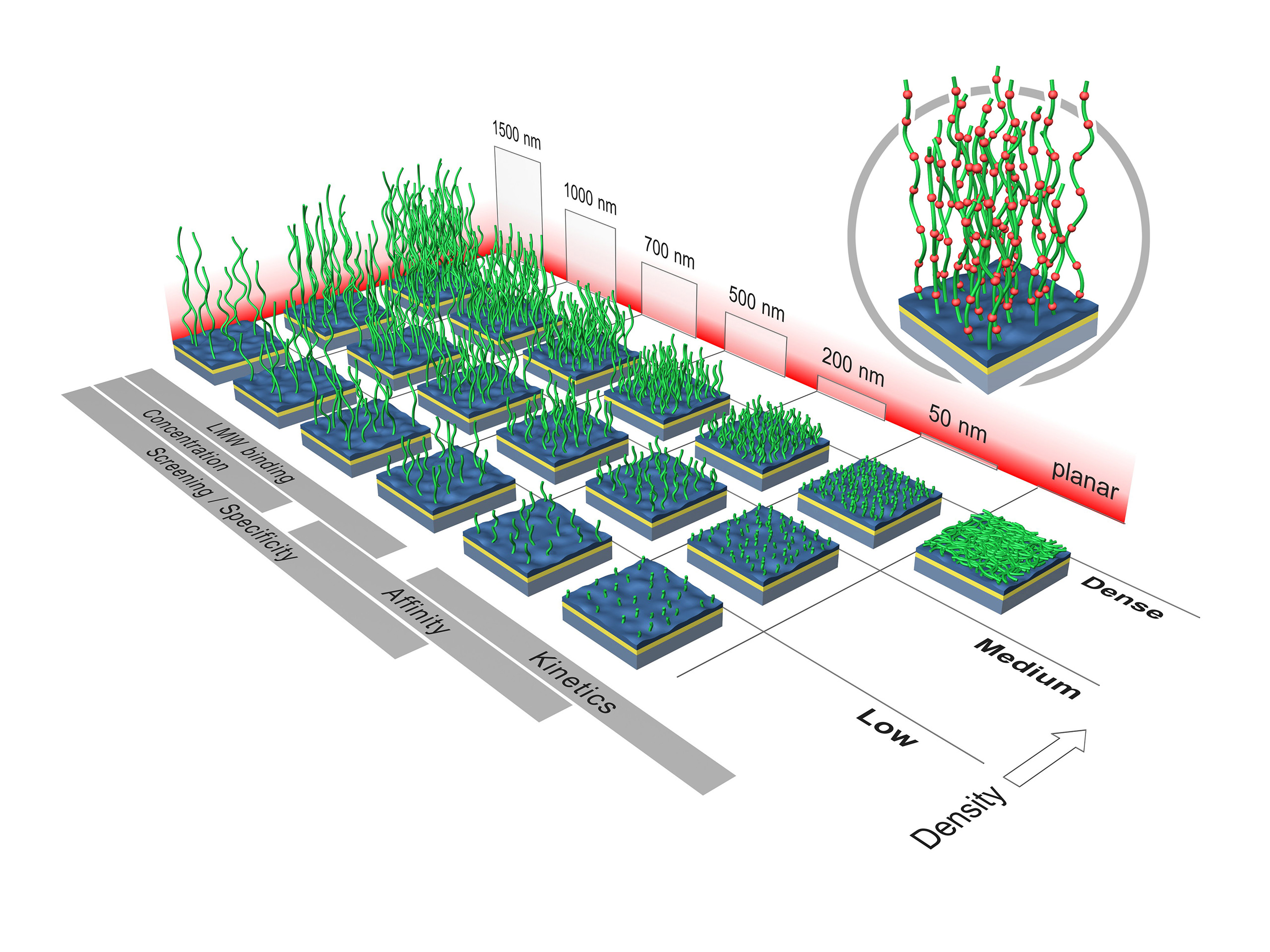CMD–modified sensor chips
XanTec’s CMD sensor chips are based on a 2D (CMDP) or 3D hydrogel matrix consisting of carboxymethyl-dextran chains grafted onto a hydrophilic adhesion promoter on a gold support. Ligands can be covalently attached through their amine, thiol, or aldehyde groups using established coupling chemistries such as EDC/NHS activation, thiol-maleimide coupling, or reductive amination. This versatility enables the immobilization of a wide spectrum of biomolecules including proteins, antibodies, peptides, nucleic acids, and small organic compounds.
The CMD sensor chip portfolio spans electrostatic immobilization capacities from a few thousand μRIU (CMDP) to about 50,000 μRIU (CMD700M), covering analytes from large viruses to small organic fragments. Owing to this versatility, CMD chips are used in biochemical research, assay development, quality control, trace analysis, and drug discovery. Different chain densities further enhance flexibility:
- M variants (medium density, e.g., CMD200M, CMD700M) enable high ligand loading and elevated sensitivity for small-molecule kinetics and fragment screening.
- L variants (low density, e.g., CMD50L, CMD200L) occupy less of the evanescent field, minimize diffusion effects, and are ideal for capture assays or large analytes.
Key features:
- Versatile ligand coupling: Covalent coupling through amine, thiol, or aldehyde groups via standard chemistries (EDC/NHS, maleimide, reductive amination).
- Wide immobilization range: From several thousand to ≈ 50,000 μRIU, suitable for analytes from whole cells and viruses to fragments < 300 Da.
- Bioinert nanoarchitecture: Proprietary hydrophilic adhesion promoter combined with a hydrated CMD matrix minimizes nonspecific binding and matrix-analyte interactions.
- Application versatility: Suitable for kinetic, equilibrium, and concentration analyses, as well as diverse screening applications in drug discovery.
- High chemical stability: Withstands typical regeneration conditions, maintaining consistent response levels and kinetic behavior after multiple regeneration cycles.
Further details on the most popular XanTec CMD sensor chips are listed below.1

| Product code1 | CMDP | CMD50L | CMD200L | CMD200M | CMD700M |
|---|---|---|---|---|---|
| Base coating | 2D, ultra-short bioinert CM-dextran (high density) | 3D, 50 nm bioinert CM-dextran (low density) | 3D, 200 nm bioinert CM-dextran (low density) | 3D, 200 nm bioinert CM-dextran (medium density) | 3D, 700 nm bioinert CM-dextran (medium density) |
| Immobilization capacity [µRIU] 2 | ≈ 5,000 | ≈ 10,000 | ≈ 22,000 | ≈ 33,000 | ≈ 50,000 |
| Recommended ligands |
|
||||
| Recommended analytes |
|
|
|
|
|
| Intended purpose |
|
|
|
|
|
1 This overview represents a selection of the full CMD sensor chip portfolio.
2 Preconcentration capacity determined by injecting 100 µg/mL bovine serum albumin (BSA) in 5 mM sodium acetate pH 5.0.
NeutrAvidin–modified sensor chips
XanTec NeutrAvidin-modified sensor chips are coated with a bioinert, charge-reduced (poly)carboxylate matrix (HLC), pre-functionalized with a recombinant 52 kDa NeutrAvidin tetramer. This immobilized NeutrAvidin efficiently captures biotinylated biomolecules—including proteins, nucleic acids, peptides, and other biotin-tagged ligands—under physiological conditions.
NeutrAvidin-modified sensor chips are especially tailored to reduce nonspecific binding in SPR assays. This is achieved by combining the deglycosylated, nearly charge-neutral (under physiological conditions) NeutrAvidin, with the highly bioinert, charge-reduced HLC coating, where most negative charges are neutralized. This unique combination renders the NAHLC sensor chips particularly suitable for assessing demanding analytes with high positive net charge.
Due to the exceptionally high binding affinity of NeutrAvidin for biotin (dissociation equilibrium constant ≈ 10⁻¹⁵ M), XanTec’s NAHLC sensor chips allow stable immobilization of biotinylated ligands with negligible dissociation.
Key features:
- Reduced nonspecific binding: NAHLC is an alternative to streptavidin-modified sensor chips in assays affected by nonspecific binding.
- Fast assay development: No preconcentration or surface activation required. Controlled ligand immobilization is performed under physiological conditions, reducing preparation time and ensuring reproducibility.
- Exceptional stability: Exceptionally strong NeutrAvidin-biotin binding makes this surface compatible with most common regeneration protocols.
- Oriented immobilization: Controlled biotinylation via biomolecular tools such as AviTag allows for maximum ligand activity and reproducible immobilization results.
- Broad application range: Ideal for immobilization of a wide variety of biotinylated ligands, making it suitable for protein interaction studies, nucleic acid hybridization, antibody screening, and other biosensing applications.
- Versatile capture capacity: Available on various HLC base coatings, offering different capture capacities to match specific experimental needs.
Further details of XanTec NAHLC sensor chips are listed below.

| Product code | NAHCP2 | NAHLC30M | NAHLC200M | NAHLC1500M |
|---|---|---|---|---|
| Base coating | 2D, ultra-short bioinert polycarboxylate (medium density) | 3D, 30 nm bioinert polycarboxylate (medium density, reduced charge) | 3D, 200 nm bioinert polycarboxylate (medium density, reduced charge) | 3D, 1500 nm bioinert polycarboxylate (medium density, reduced charge) |
| Capture immobilization capacity [µRIU] 1 | ≈ 800 | ≈ 1,700 | ≈ 3,300 | ≈ 4,000 |
| Recommended ligands | biotinylated
|
|||
| Recommended analytes |
|
|
|
|
| Intended purpose |
|
|
|
|
1 Based on specific binding of 100 µg/mL biotinylated bovine serum albumin (BSA) in phosphate-buffered saline (PBS).
2 NAHCP is the only variant that employs the classic HC matrix instead of HLC.
HC–modified sensor chips
XanTec’s HC sensor chips are based on a 2D (HCP) or 3D hydrogel matrix composed of highly flexible, bioinert polycarboxylate chains grafted onto a hydrophilic adhesion promoter on a gold support. Ligands can be covalently attached through their amine, thiol, or aldehyde groups using established coupling chemistries such as EDC/NHS activation, thiol-maleimide coupling, or reductive amination. This versatility enables the immobilization of a wide range of biomolecules including proteins, antibodies, peptides, nucleic acids, carbohydrates, and small organic compounds.
The HC sensor chip portfolio spans electrostatic immobilization capacities from a few thousand μRIU (HCP) to ≈ 55,000 μRIU (HC1500M), covering analytes from large viruses to small organic fragments. The HC polycarboxylate matrix is more flexible and less bulky than carboxymethyl-dextran coatings, occupying a smaller fraction of the evanescent field. Its strongly hydrated polymer brush makes the surface highly bioinert and minimizes nonspecific binding. This combination provides high immobilization capacity with excellent diffusion properties, making HC chips a preferred alternative to CMD-based sensor surfaces in biochemical research, assay development, quality control, trace analysis, and drug discovery.
Key features:
- Versatile ligand coupling: Covalent coupling through amine, thiol, or aldehyde groups via standard chemistries (EDC/NHS, maleimide, reductive amination).
- Wide immobilization range: From several thousand to ≈ 55,000 μRIU, suitable for analytes from whole cells and viruses to fragments < 300 Da.
- Bioinert nanoarchitecture: Proprietary hydrophilic adhesion promoter combined with a strongly hydrated polycarboxylate matrix minimizes nonspecific binding.
- Application versatility: Suitable for kinetic, equilibrium, and concentration analyses, as well as diverse screening applications in drug discovery.
- High chemical stability: Withstands typical regeneration conditions, maintaining consistent response levels and kinetic behavior after multiple regeneration cycles.
- No polysaccharide backbone: Lack of carbohydrate motifs prevents unwanted interactions with lectins or carbohydrate-binding proteins, making HC sensor chips ideal for analyzing this class of biomolecules and bioelectrical impedance analysis (BIA) of carbohydrates.
Further details on the most popular XanTec HC sensor chips are listed below.1

| Product code1 | HCP | HC30M | HC200M | HC1500M |
|---|---|---|---|---|
| Base coating | 2D, ultra-short bioinert polycarboxylate (high density) | 3D, 30 nm bioinert polycarboxylate (medium density) | 3D, 200 nm bioinert polycarboxylate (medium density) | 3D, 1500 nm bioinert polycarboxylate (medium density) |
| Immobilization capacity [µRIU] 2 | ≈ 5,000 | ≈ 19,000 | ≈ 33,000 | ≈ 55,000 |
| Recommended ligands |
|
|||
| Recommended analytes |
|
|
|
|
| Intended purpose |
|
|
|
|
1 This overview represents a selection of the full HC sensor chip portfolio.
2 Preconcentration capacity determined by injecting 100 µg/mL bovine serum albumin (BSA) in 5 mM sodium acetate pH 5.0.
NTA–modified Sensor Chips
XanTec NiD and NiHC sensor chips are coated with a bioinert (poly)carboxylate hydrogel matrix that has been modified with nitrilotriacetic acid (NTA) functionalities. These sensor chips allow the reversible capture immobilization of His-tagged biomolecules through complex formation with transition metal ions, preferably Ni2+. For sufficient binding stability, the His-tag should contain six to ten histidine residues. For complete regeneration of NTA-modified sensor chips, the NTA(Ni2+)-His-tag complex can be cleaved by chelating agents such as EDTA or imidazole.
Binding Characteristics:
NiD Sensor Chips: The binding affinity of Ni2+-loaded NiD sensor chips is primarily governed by the typical monovalent interaction between NTA(Ni2+) and His-tags, with dissociation rates (koff) in the range of 10-3 s-1.
NiHC Sensor Chips: Multivalent binding character, leading to a significant increase in binding stability of up to three orders of magnitude. Baselines after His-tagged ligand capture show minimal to no drift, with typical koff values of 10-5–10-6 s-1.1
Key features:
- Fast assay development: No pre-concentration or surface activation required. Controlled and reversible ligand immobilization is performed under physiological conditions, reducing preparation time and ensuring reproducibility.
- Easy Regeneration: Regenerate chip surfaces using EDTA or imidazole injections.
- Outstanding Stability: NiHC sensor chips deliver exceptionally stable binding due to multivalent interaction, minimizing baseline drift during analysis.
- Oriented immobilization: Maximum ligand activity due to oriented immobilization of his-tagged proteins.
- Versatile Capture Capacity: Available on various CMD and HC base coatings to support the analysis of a broad range of analytes, from small molecules to large proteins and even viruses and cells.
For further details, find a list of the most popular XanTec NTA sensor chips below.
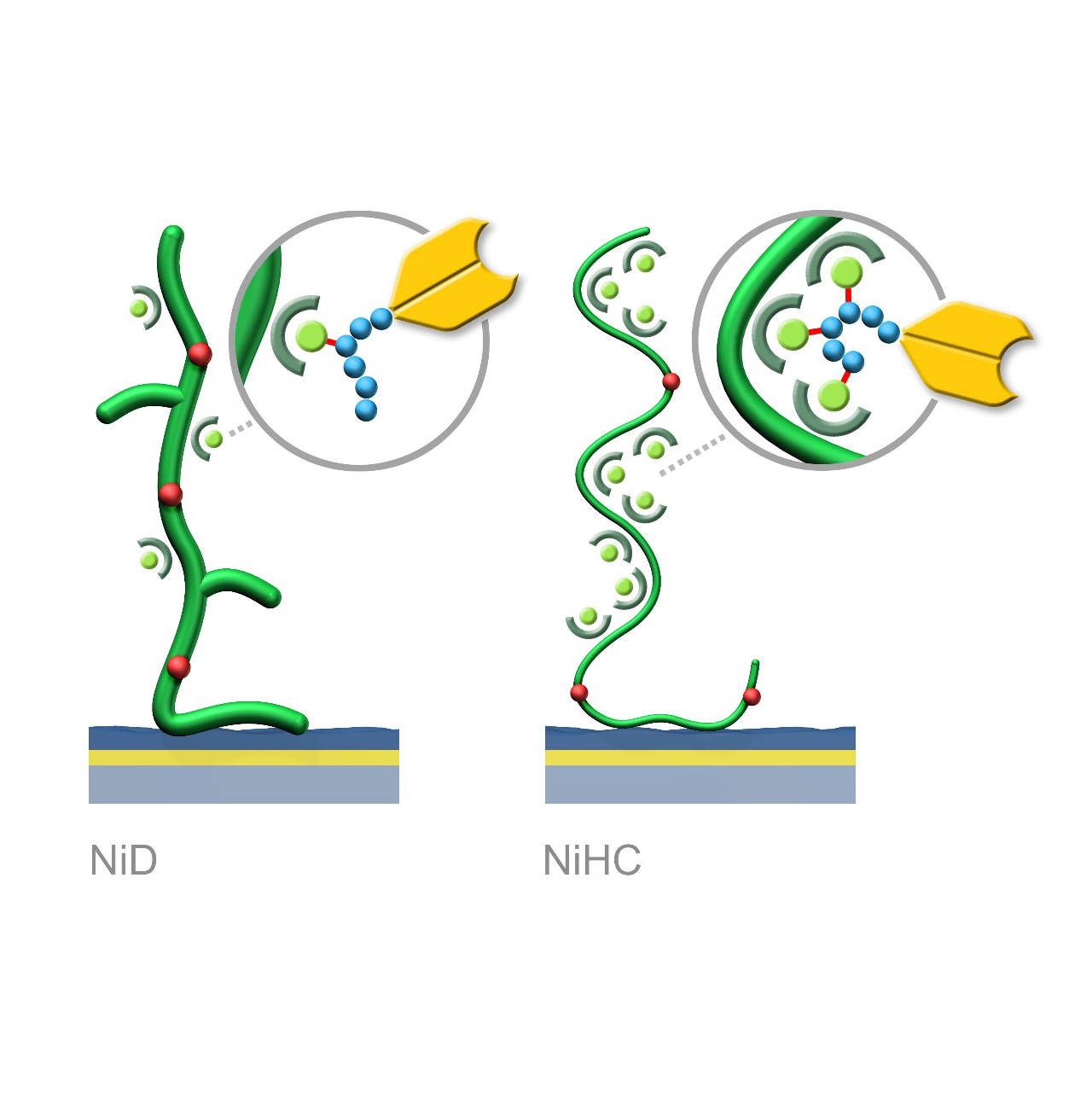
| Product code2 | NiP | NiD200M | NiHC200M | NiHC1500M | |
|---|---|---|---|---|---|
| Base Coating | 2D, ultra-short bioinert CM-dextran (high density) | 3D, 200 nm bioinert CM-dextran (medium density) | 3D, 200 nm bioinert polycarboxylate (medium density) | 3D, 1500 nm bioinert polycarboxylate (medium density) | |
|
Typical specific binding capacity [µRIU]3 |
≈ 100 | ≈ 400 | ≈ 1200 | ≈ 2000 | |
| Ligands | His-tagged peptides and proteins | ||||
| Analytes |
|
|
|
|
|
| Intended purpose |
|
|
|
|
|
1 High binding stability requires immobilization at approximately one-third of the chip’s maximum capacity
2 Table includes a selection from XanTec’s full NTA sensor chip portfolio
3 Binding capacities are based on the capture level of His₆-peptide from a 5 µM solution after a 180 s stabilization period. Immobilization capacities of His-tagged proteins are considerably higher.
PAG–modified Sensor Chips
XanTec PAGP, PAGD, and PAGHC sensor chips are coated with a bioinert polycarboxylate matrix, pre-functionalized with recombinant 50.5 kDa Protein AG. This non-glycosylated Protein AG variant includes four IgG-binding domains derived of Protein A and two IgG binding domains from Protein G, providing high-affinity binding to the Fc region of all human IgG subclasses. Additionally, it exhibits strong affinity for mouse IgG2a, IgG2b, and IgG3, as well as total IgG from other mammals, including cow, goat, sheep, and rabbit.
To ensure highly specific IgG binding, non-essential regions—such as the cell wall binding region, cell membrane binding region, and albumin-binding domain—have been removed from the recombinant Protein AG.
XanTec’s Protein AG sensor chips are ready-to-use, eliminating the need for time-intensive assay optimization and streamlining workflows. With five distinct Protein AG-modified versions available for SPR applications, each is tailored to specific analytical needs:
Key features:
- Fast assay development: No pre-concentration or surface activation required. Controlled and reversible ligand immobilization is performed under physiological conditions, reducing preparation time and ensuring reproducibility.
- Simple Regeneration: Regenerate chip surfaces using glycine·HCl pH 1.5
- High stability: XanTec’s Protein AG sensor chips help minimize assay costs and maximize reusability
- Oriented immobilization: High ligand activity is maintained via directed immobilization through the Fc region.
For further information, refer to the table below, which highlights some of XanTec’s most widely used PAG sensor chips:

| Product code1 | PAGP | PAGD200L | PAGHC30M | PAGHC200M | |
|---|---|---|---|---|---|
| Base Coating | 2D, ultra-short bioinert CM-dextran (high density) | 3D, 200 nm bioinert CM-dextran (low density) | 3D, 30 nm bioinert polycarboxylate (medium density) | 3D, 200 nm bioinert polycarboxylate (medium density) | |
|
Typical specific binding capacity [µRIU]2 |
≈ 5,000 | ≈ 12,000 | ≈ 6,000 | ≈ 11,000 | |
| Ligands | Fc region of all human IgG subclasses, strong affinity for mouse IgG2a, IgG2b, and IgG3, total IgG from cow, goat, sheep, and rabbit | ||||
| Analytes |
|
|
|
|
|
| Intended purpose |
|
|
|
|
|
1 Table includes a selection from XanTec’s full PAG sensor chip portfolio.
2 Maximum binding capacities are determined based on the capture level from a 100 µg/mL solution of Protein A–purified, pooled human IgG in PBS buffer.
Streptavidin–modified Sensor Chips
XanTec streptavidin-modified sensor chips are coated with a bioinert (poly)carboxylate matrix, pre-functionalized with a recombinant 52 kDa streptavidin tetramer. This immobilized streptavidin efficiently captures biotinylated biomolecules—including proteins, nucleic acids, peptides, and other biotin-tagged ligands—under physiological conditions. Thanks to the exceptionally high binding affinity of streptavidin for biotin (dissociation equilibrium constant ≈ 10-15 M), XanTec’s SA sensor chips enable the stable immobilization of biotinylated ligands with negligible dissociation.
Key features:
- Fast assay development: No pre-concentration or surface activation required. Controlled ligand immobilization is performed under physiological conditions, reducing preparation time and ensuring reproducibility.
- Exceptional stability: The exceptional strong streptavidin-biotin binding makes this surface resistant to most common regeneration protocols.
- Oriented immobilization: Controlled biotinylation via biomolecular tools like the AviTag™ allows for maximum ligand activity and reproducible immobilization results.
- Broad Application Range: Ideal for the immobilization of a wide variety of biotinylated ligands, making it suitable for protein interaction studies, nucleic acid hybridization, antibody screening, and other biosensing applications.
- Versatile Capture Capacity: Available on various CMD and HC base coatings, offering different capture capacities to match specific experimental needs.
For further details, find a list of the most popular XanTec SA sensor chips below.
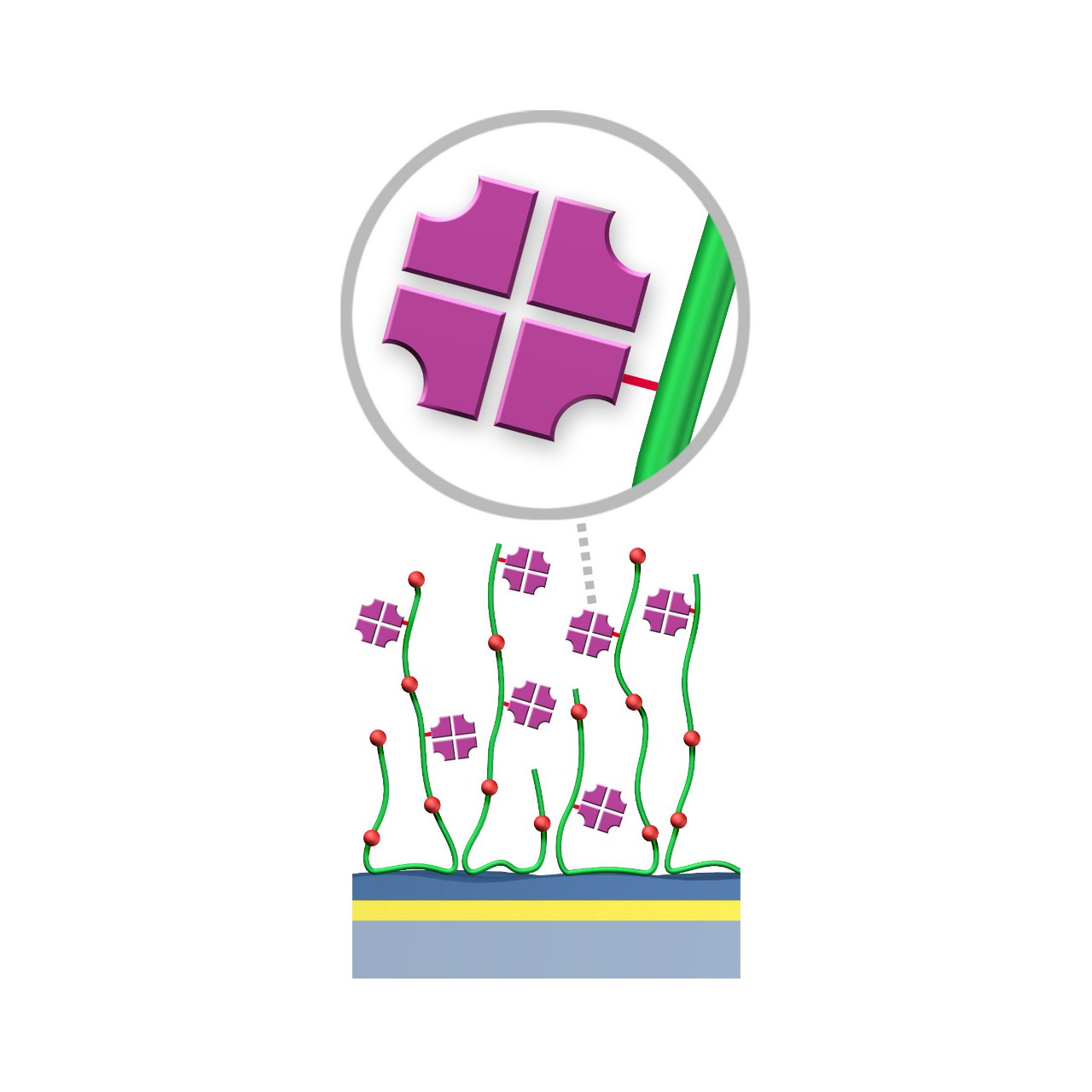
| Product code1 | SAP | SAD200M | SAD700L | SAHC30M | SAHC200M | SAHC1500M |
|---|---|---|---|---|---|---|
| Base coating | 2D, ultra-short CM-Dextran (high density) |
3D, 200 nm bioinert CM-dextran (medium density) |
3D, 700 nm bioinert CM-dextran (low density) |
3D, 30 nm bioinert polycarboxylate (medium density) |
3D, 200 nm bioinert polycarboxylate (medium density) |
3D, 1500 nm bioinert polycarboxylate (medium density) |
| Specific binding capacity [µRIU]2 | ≈ 600–1200 | ≈ 4000–5000 | ≈ 6000–8000 | ≈ 1200–1800 | ≈ 3500–5000 | ≈ 4500–6000 |
| Recommended ligands | Biotinylated
|
Biotinylated
|
||||
| Recommended analytes |
|
|
|
|
|
|
| Intended purpose |
|
|
|
|
|
|
1 This overview represents a selection of the full streptavidin sensor chip portfolio.
2 Based on the specific binding of 100 µg/mL biotinylated BSA in PBS.
HCX sensor chips (NHS–preactivated)
XanTec’s HCX sensor chips are based on a 3D hydrogel matrix composed of flexible polycarboxylate chains grafted onto a hydrophilic adhesion promoter on a gold support. The carboxylate groups are partially pre-activated with NHS esters, providing medium to high activation level and enabling high immobilization capacities. This pre-activation significantly simplifies and accelerates ligand coupling, making HCX chips a powerful tool for streamlined workflows. They are particularly advantageous for spot immobilization in imaging SPR systems.
Although a certain fraction of a spotted ligand will immobilize when drying spots, electrostatic preconcentration substantially increases immobilization yields. A preconcentration scouting step is therefore recommended prior to coupling. However, small molecules freely diffuse into the hydrogel and do not require preconcentration for efficient immobilization.
Key features:
- Save time: Pre-activated sensor chips allow direct and convenient ligand immobilization, saving time and effort.
- Reliable results: Avoid variability of reagent quality and instead achieve consistent, reproducible immobilization every time.
- Flexibility: From moderate-capacity chips for protein-protein interaction studies to ultra-high-capacity formats for fragment screening, HCX covers the entire spectrum of ligand density requirements.
Further details on XanTec HCX sensor chips are listed below.
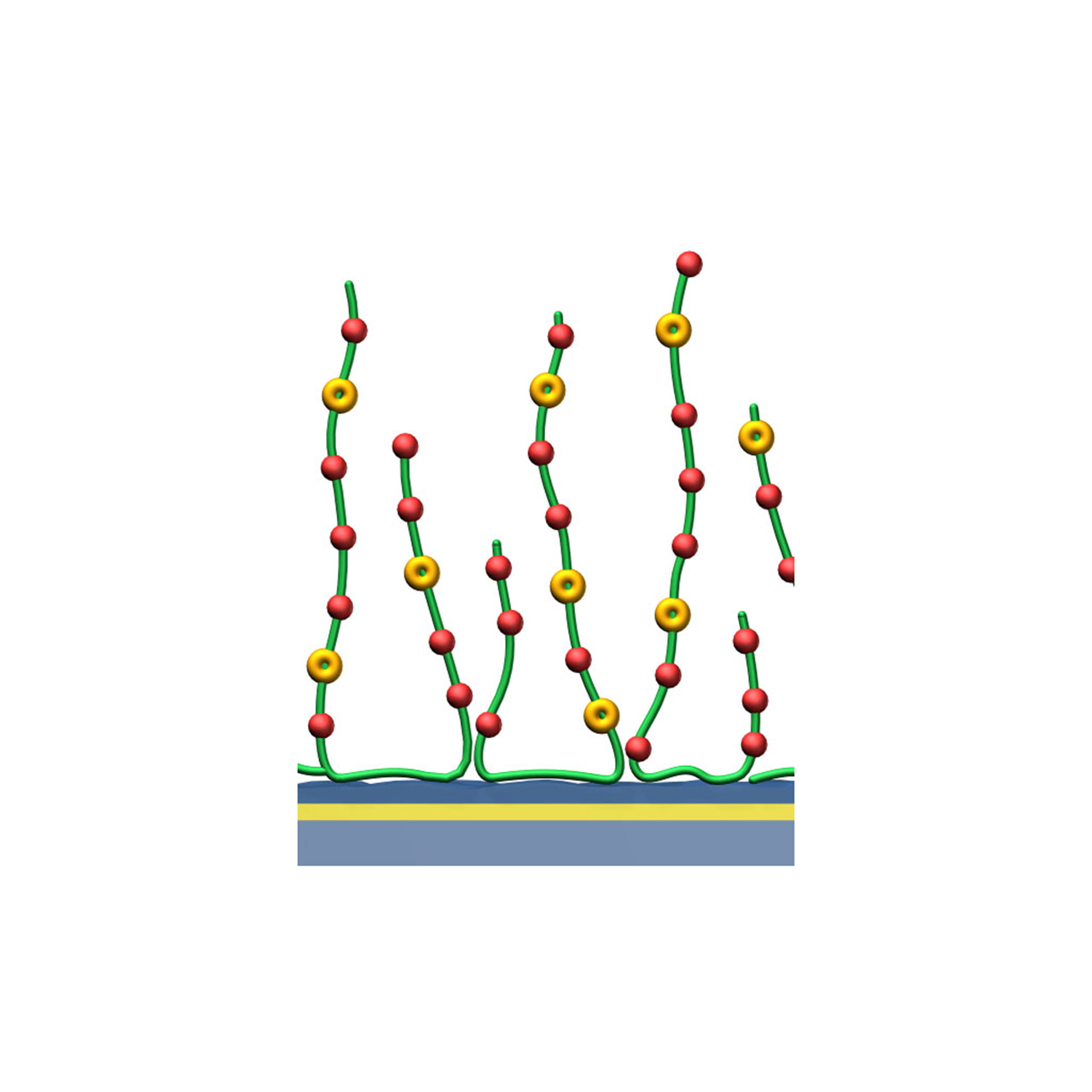
| Product code | HCX30M | HCX200M | HCX1000M |
|---|---|---|---|
| Base coating | 3D, 30 nm bioinert polycarboxylate (medium density) NHS pre-activated |
3D, 200 nm bioinert polycarboxylate (medium density) NHS pre-activated |
3D, 1000 nm bioinert polycarboxylate (medium density) NHS pre-activated |
| Immobilization capacity [µRIU] 2 | ≈ 9,000 | ≈ 15,000 | ≈ 20,000 |
| Recommended ligands3 |
|
|
|
| Recommended analytes |
|
|
|
| Intended purpose |
|
|
|
1 This overview represents a selection of the full HCX sensor chip portfolio.
2 Covalent immobilization capacity was assessed by injecting 100 µg/mL bovine serum albumin (BSA) in 5 mM sodium acetate pH 5.0.
3 Ligands require an NHS-reactive amine.
Azide–modified sensor chips
XanTec’s AZ sensor chips are coated with a bioinert polycarboxylate matrix (CMD or HC), pre-functionalized with low-molecular-weight azido groups grafted onto a hydrophilic adhesion promoter on a gold support. Ligands containing a compatible Click partner—such as dibenzocyclooctyne (DBCO)—can be covalently attached in a fast and selective manner via strain-promoted azide-alkyne cycloaddition (Click reaction).
Unlike classical EDC/NHS chemistry, DBCO/azide coupling is not time-critical; both reaction partners remain stable for weeks across pH 4—10. Their high selectivity minimizes side reactions and eliminates the need for quenching steps1. Consequently, immobilization via Click coupling is reliable, convenient, and flexible. Owing to rapid reaction kinetics, coupling under physiological conditions is feasible, although maximum immobilization densities may be somewhat lower; thus, electrostatic preconcentration remains advantageous for achieving high ligand loading.
The AZ sensor chip portfolio spans electrostatic immobilization capacities from approximately 6000 μRIU (AZD50L) to 40,000 μRIU (AZHC1500M), covering analytes from large viruses to small organic fragments. The surface-bound azido groups are highly hydrophilic and possess a strong dipole moment, further enhancing the overall bioinertness of the coating.
Key features:
- Versatile ligand coupling: Highly efficient and selective Click reaction enables covalent attachment of DBCO-functionalized ligands. Unlike classic amine coupling, ligand density can be iteratively increased after initial coupling, allowing fast optimization of immobilization levels and efficient sensor chip use.
- Superior efficiency: The high efficiency of the Click reaction permits ligand immobilization even under physiological conditions.
- DBCO functionalization: Ligands can be conveniently DBCO-modified using standard labeling protocols similar to biotinylation; site-specific conjugation via sortase-mediated ligation is also supported.
- Wide immobilization range: From several thousand to ~40,000 μRIU, suitable for analytes from whole cells and viruses to fragments < 300 Da.
- Bioinert nanoarchitecture: Combining a hydrophilic adhesion promoter, hydrated polycarboxylate matrix (CMD or HC), and surface azido groups minimizes nonspecific binding.
- Application versatility: Suitable for kinetic, equilibrium, and concentration analyses, as well as diverse screening applications in drug discovery.
Further details of the most popular XanTec AZ sensor chips are listed below.

| Product code | AZD200M | AZHC30M | AZHC200M | AZHC1500M |
|---|---|---|---|---|
| Base coating | 3D, 200 nm bioinert CM-dextran (medium density) | 3D, 30 nm bioinert polycarboxylate (medium density) | 3D, 200 nm bioinert polycarboxylate (medium density) | 3D, 1500 nm bioinert polycarboxylate (medium density) |
| Covalent immobilization capacity [µRIU] 2 | ≈ 13,000 (30,000) | ≈ 10,000 (18,000) | ≈ 13,000 (26,000) | ≈ 20,000 (40,000) |
| Recommended ligands |
|
|||
| Recommended analytes |
|
|
|
|
| Intended purpose |
|
|
|
|
1 This is valid only when the analyte lacks its own Click-reactive functionality; otherwise, unintended covalent attachment may occur.
2 Covalent immobilization capacity was assessed by injecting 100 µg/mL DBCO-modified streptavidin in 5 mM sodium acetate buffer (pH 5.0). Electrostatic preconcentration capacity is shown in brackets.
DBCO–modified sensor chips
XanTec’s DBCO sensor chips (DC) are coated with a dibenzocyclooctyne (DBCO)-derivatized bioinert carboxymethyl-dextran (CMD) matrix grafted onto a hydrophilic adhesion promoter on a gold support. Ligands containing a compatible Click partner—such as an azide group—can be covalently attached rapidly and selectively via strain-promoted azide-alkyne cycloaddition (SPAAC, Click reaction).
Unlike classical EDC/NHS amine-coupling, DBCO/azide Click chemistry is not time-critical; both reaction partners remain stable for weeks across pH 4-10. Their high selectivity minimizes side reactions and eliminates the need for quenching steps1. Consequently, Click-based immobilization is reliable, convenient, and operationally flexible. Due to the fast reaction kinetics, coupling under physiological conditions is feasible; however, maximum immobilization densities may be somewhat lower. Therefore, electrostatic preconcentration remains advantageous for achieving high ligand loading.
DBCO-modified surfaces exhibit a higher hydrophobicity than azide-modified counterparts or unmodified CMD coatings. This can lead to increased nonspecific binding, which is at least partially mitigated by the presence of nonionic detergents (e.g., Tween) in the running buffer. DBCO-modified sensor chips are most useful when the ligand naturally contains azide functionalities. Otherwise, the azide-modified sensor coating combined with a DBCO-modified ligand is generally preferred due to its higher intrinsic bioinertness.
Key features:
- Versatile ligand coupling: Efficient and selective Click reaction enables covalent attachment of azide-functionalized ligands. Unlike classic amine coupling, ligand density can be iteratively increased after initial coupling, allowing fast optimization of immobilization levels and efficient sensor chip use.
- Superior efficiency: High efficiency of the Click reaction permits ligand immobilization even under physiological conditions.
- Azide functionalization: Ligands can be conveniently azide-modified using labeling strategies analogous to biotinylation; site-specific conjugation via azide-containing unnatural amino acids is also feasible.
- Application versatility: Suitable for kinetic, equilibrium, and concentration analyses, as well as diverse screening applications in drug discovery.
Further details on the most popular XanTec DBCO sensor chips are listed below.

| Product code | DCD50L | DCD200M |
|---|---|---|
| Base coating | 3D, 30 nm bioinert CM-dextran (low density) | 3D, 200 nm bioinert polycarboxylate (medium density) |
| Covalent immobilization capacity [µRIU] 2 | ≈ 3,000 | ≈ 11,000 |
| Recommended ligands |
|
|
| Recommended analytes |
|
|
| Intended purpose |
|
|
1 This is valid only when the analyte lacks its own Click-reactive functionality; otherwise, unintended covalent attachment may occur.
2 Covalent immobilization capacity was assessed by injecting 100 µg/mL azide-modified bovine serum albumin (BSA) in 5 mM sodium acetate buffer (pH 5.0).
Chloroalkane–modified sensor chips
XanTec’s HOP, HOHC, and HOD sensor chips are coated with either a bioinert 2D carboxylate (HOP) or a 3D polycarboxylate hydrogel (HOHC, HOD), each derivatized with short-chain chloroalkanes. These functional groups form stable covalent bonds with fusion proteins bearing a 33 kDa Halo tag. Reaction is rapid, highly specific, and occurs spontaneously under preconcentration conditions, ensuring uniform ligand orientation on the sensor surface.
Compared to conventional non-selective methods such as EDC/NHS activation, the Halo tag immobilization process offers substantial advantages. It is not only significantly more convenient, but also allows for a more controlled and well-defined immobilization. By avoiding random ligand orientation and ligand crosslinking, which often occur with EDC/NHS coupling, this approach results in a homogeneous ligand population, ultimately leading to improved data quality and reproducibility in kinetic and affinity assays. Consequently, experimental workflows are streamlined, requiring fewer optimization steps, while the consistency and integrity of kinetic interaction analyses are enhanced, making it easier to draw reliable conclusions about binding kinetics and affinities.
Adequate electrostatic preconcentration remains essential for successful protein immobilization. However, traditional preconcentration scouting cannot be performed because Halo-tagged fusion proteins would directly bind to the sensor chip. Therefore, preconcentration and immobilization must be evaluated simultaneously or on a separate non-derivatized sensor chip. For further details, please refer to the product manual.
Key features:
- Faster assay development: No chemical activation required for covalent coupling. Ligand immobilization occurs directly under preconcentration conditions with adjustable ligand density, enabling rapid and reproducible assay setup.
- Exceptional stability: Covalent coupling of Halo-tagged protein results in drift-free, permanently immobilized ligands.
- Oriented immobilization: Site-directed attachment ensures maximum ligand activity.
- Versatile capture capacity: Available on CMDP, CMD, and HC base coatings, offering different immobilization densities for specific experimental requirements.
Further details on XanTec HO sensor chips are listed below.

| Product code | HOP | HOD200M | HOHC200M |
|---|---|---|---|
| Base coating | 2D, ultra-short CM-dextran (high density) |
3D, 200 nm bioinert CM-dextran (medium density) |
3D, 200 nm bioinert polycarboxylate (medium density) |
| Immobilization capacity [µRIU] 1 | ≈ 3,000 | ≈12,000 | ≈15,000 |
| Recommended ligands | Halo-tagged peptides and proteins | ||
| Recommended analytes |
|
|
|
| Intended purpose |
|
|
|
1 Based on specific binding of 30 µg/mL HaloTag®-GST fusion protein (61 kDa) in 5 mM sodium acetate pH 5.0.
HLC–modified sensor chips
XanTec’s HLC sensor chips are based on a 3D hydrogel matrix composed of highly flexible, bioinert polycarboxylate chains grafted onto a hydrophilic adhesion promoter on a gold support. Ligands can be covalently attached through their amine, thiol, or aldehyde groups using established coupling chemistries such as EDC/NHS activation, thiol-maleimide coupling, or reductive amination. This versatility enables the immobilization of a wide range of biomolecules, including proteins, antibodies, peptides, nucleic acids, carbohydrates, and small organic compounds.
Compared with native HC coatings, a large fraction of carboxyl groups in the HLC polymer is converted to hydroxyl groups, substantially lowering the surface charge. As a result, HLC sensor chips are even more bioinert than their HC counterparts, and are particularly advantageous in experiments affected by persistent nonspecific binding—an issue often encountered with strongly positively charged biomolecules. The remaining carboxyl groups are typically sufficient to support electrostatic preconcentration and efficient covalent ligand coupling.
Key features:
- Reduced surface charge: Significantly lower nonspecific binding than native HC, especially with highly positively charged biomolecules; particularly suited for complex matrices such as cell culture media.
- Versatile ligand coupling: Covalent coupling through amine, thiol, or aldehyde groups via standard chemistries (EDC/NHS, maleimide, reductive amination).
- Wide immobilization range: From several thousand to ~18,000 μRIU, suitable for analytes from whole cells and viruses to fragments < 300 Da.
- Application versatility: Suitable for kinetic, equilibrium, and concentration analyses, as well as diverse screening applications in drug discovery.
- High chemical stability: Withstands typical regeneration conditions, maintaining consistent response levels and kinetic behavior after multiple regeneration cycles.
- No polysaccharide backbone: Lack of carbohydrate motifs prevents unwanted interactions with lectins or carbohydrate-binding proteins, making HLC sensor chips ideal for analyzing this class of biomolecules.
Further details on the most popular XanTec HLC sensor chips are listed below.
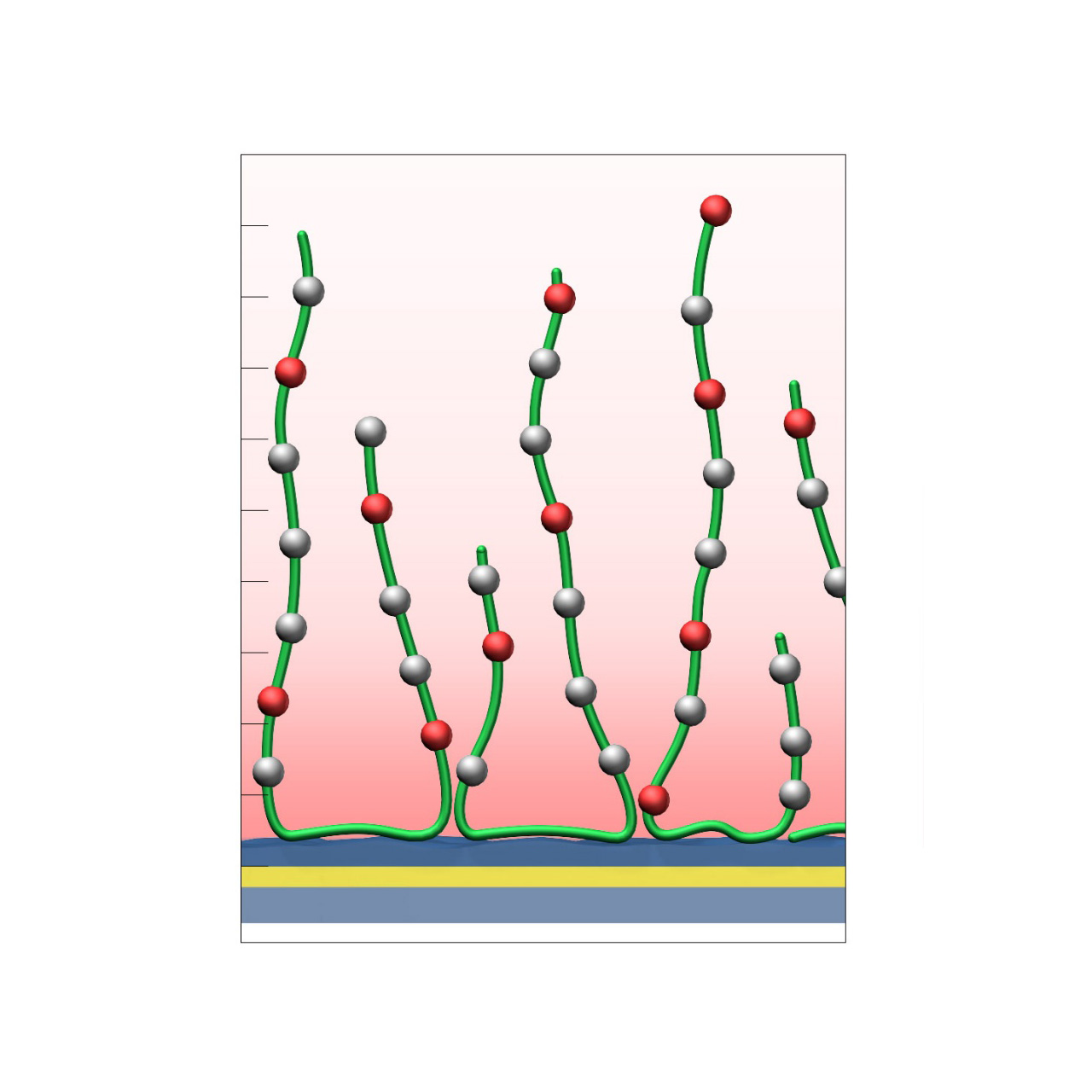
| Product code | HLC30M | HLC200M | HLC1500M |
|---|---|---|---|
| Base coating | 3D, 30 nm bioinert polycarboxylate (medium density, reduced charge) | 3D, 200 nm bioinert polycarboxylate (medium density, reduced charge) | 3D, 1500 nm bioinert polycarboxylate (medium density, reduced charge) |
| Immobilization capacity [µRIU] 1 | ≈ 6,000 | ≈ 11,000 | ≈ 18,000 |
| Recommended ligands |
|
||
| Recommended analytes |
|
|
|
| Intended purpose |
|
|
|
1 Preconcentration capacity determined by injecting 100 µg/mL bovine serum albumin (BSA) in 5 mM sodium acetate pH 5.0.
Agarose
Agarose (MW approx. 120 kDa) monolayer grafted to a thin adhesion promoter.
Linear polymer consisting of alternating D-galactose and 3,6-anhydro-L-galactopyranose linked by α-(1→3) and β-(1→4) glycosidic bonds.

Alginate
Alginate (or alginic acid) is a biopolymer that has found numerous applications in biomedical science and engineering. Alginate hydrogels are particularly attractive in wound healing, drug delivery, and tissue engineering applications, as these gels retain structural similarity to the extracellular matrices in tissues.
Alginate is a linear polymer composed of (1-4)-linked β-D-mannuronate (M) and its C-5 epimer α-L-guluronate (G), covalently linked together in different sequences. The monomers can appear in homopolymeric blocks of consecutive G-residues (G-blocks), consecutive M-residues (M-blocks), or alternating M and G-residues (MG-blocks). Alginates are refined from brown seaweeds of the class Phaeophyceae. As a natural product, alginates from different species of seaweed have variations in their chemical structure, resulting in different physical properties.
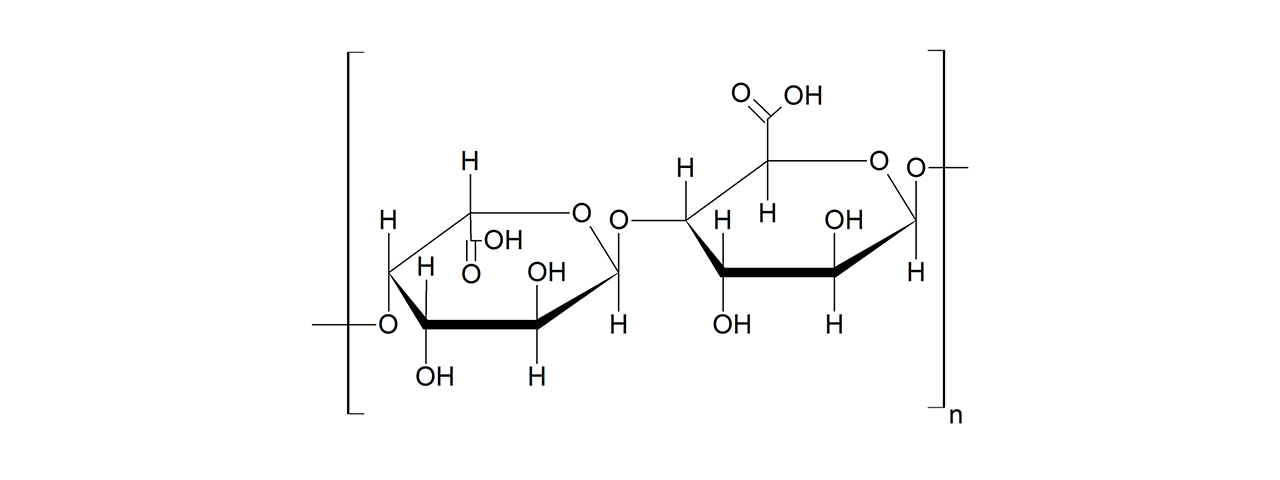
Click chemistry (AZC, AZD, DCD)
Click Chemistry or Click Coupling has gained increasing popularity among chemists because of its outstanding reaction kinetics, excellent selectivity, and superior stability in physiological environments. To make this bioconjugation technology available for ligand immobilization in SPR biosensing, polycarboxylate sensor coatings are modified with a very small, bioinert, azido (N3) group, while the ligand is labeled with a low-molecular-weight cyclooctyne linker (DBCO), a procedure comparable to ligand biotinylation. These groups can react in a quantitative and highly-selective manner via a simple alkyne–azide cycloaddition, forming a stable, covalent triazole linkage.
Some expression systems are capable of site-specific integration of non-natural amino acids containing an azide moiety. For efficient, selective and site-directed Click Coupling of such ligands XanTec also offers DBCO-modified sensor chips.
You can find more information about azide- and DBCO-modified polycarboxylate sensor chips for Click Chemistry here.
Linear polycarboxylate (C)
The robust C hydrogel consists of a hydrophilic, strictly linear polycarboxylate with a polyalkyl backbone. Compared with CM-Dextran (CMD) coatings, this hydrogel shows significantly lower diffusion limitation, resulting from its small molecular footprint and higher flexibility of the polymer chains. It has a high carboxyl group density and is a good choice if the ligand and analyte are small and high immobilization density is required. Due to the high negative charge density, the C coating is particularly well suited for acidic analytes, such as DNA. Harsh conditions are tolerated as the C–C backbone withstands practically all aqueous buffers and organic solvents except strong oxidizing agents.
Chondroitin sulfate (CDS)
CDS is an unbranched glycosaminoglycan composed of a chain of alternating sugars (N-acetyl-D-galactosamine and D-glucuronic acid) where each sugar can be sulfated in variable positions and quantities.
As a mucopolysaccharide and component of cartilage tissue, CDS shows good biocompatibility while being mechanically relatively rigid. The abundant carboxyl groups allow for activation using standard EDC/NHS chemistry.

CM-Cellulose
Carboxymethyl cellulose (CM-Cellulose, CMC) is a cellulose derivative with carboxymethyl groups (–CH2–COOH) bound to hydroxyl groups of the glucopyranose monomers that make up the cellulose backbone. Dependent on the degree of carboxymethylation and the polymer length, functional properties of CMC vary. CMC sensor surfaces can be useful for interaction studies of plant derived biomolecules or cellulose-related research.

Carboxymethyldextran (CMD)
Dextran and its derivative CM-Dextran have a long history as biocompatible materials and the crosslinked form of CMD (Sephadex®) has been used for more than 50 years as a stationary phase for chromatography of biomolecules. These polysaccharides are relatively bioinert and moderate flexibility of the polymer chains gives immobilized ligands a degree of freedom within the hydrogel. Dextran-based hydrogel coatings thus provide a good environment for many biomolecular interactions. The polymer main chain consists of glucose monomers with α-1,6 glycosidic linkages and occasional branches formed by α-1,3 forks. Carboxymethylation—usually one COOH per anhydroglucose unit—introduces negatively charged carboxyl groups into the dextran, which can be activated with EDC/NHS and allow for a range of secondary derivatizations, such as amino, thiol or azide groups.
CM-Dextran coatings also serve as the basis for further sensor chip types or modifications, such as Protein A/G for capture of antibodies, NTA for His6-tags, streptavidin for biotinylated proteins, and lipophilic anchors for immobilization of vesicles and micelles.
Hydrogels from CM-Dextran coatings are suitable for many applications. However, in interaction measurements with other carbohydrates or with highly glycosylated proteins, nonspecific interactions can be high, making CMD less suitable for such analytes/ligands. Furthermore, carbohydrate-based polymers are quite bulky, occupy a significant fraction of the evanescent field, and can cause diffusion artifacts.

Planar carboxymethyldextran (CMDP)
Short carboxymethyldextran (CMD) chains in train conformation, i.e. attached almost flat to a thin adhesion promoter layer. The dextran matrix of this <5 nm thin composite coating has the same molar carboxymethylation level as our 3-dimensional CMD sensor chips, i.e. one carboxymethyl group carried per anhydroglucose unit.
The hydrated yet thin structure of this coating effectively suppresses nonspecific interactions while avoiding steric effects, which is advantageous when working with large molecules (MW >200 kDa). The CMDP coating is also suitable for particulate analytes, such as viruses and whole cells. As for all carboxyl functionalized coatings, this surface is compatible with standard EDC/NHS immobilization chemistry.
Carboxymethylpolyethyleneglycol (CMPEG)
Carboxyl-terminated polyethylene glycol (4 kDa) terminally grafted to a hydrophilic adhesion promoter. Low non-specific binding and limited negative charge density (only one COO- functionality per PEG molecule). Immobilization of biomolecules via, e.g., EDC/NHS chemistry familiar from more common chip coatings like carboxymethyldextran (CMD).
Low-molecular-weight PEG coatings combine good entropic stabilization with the advantage that the interactions take place relatively close to the gold surface, i.e., in the most sensitive part of the evanescent field. This surface is an alternative for interaction analysis of medium- or high-MW analytes if dextran- or polycarboxylate-based surfaces cannot be used.

Sulfonated polycarboxylate hydrogel (CS)
The partially sulfonated “C“-matrix consists of a biocompatible, hydrophilic, strictly linear polycarboxylate comprising of a brush-structured polyalkyl polymer backbone in which some carboxylic groups have been replaced by more acidic sulfonates. Having a lower pKa compared with carboxylates, these sulfonate groups allow preconcentration of proteins with pI <4.25. The typical characteristics of the C matrix, such as reduced diffusion limitation for bigger molecules and higher flexibility of the polymer chains compared to polysaccharide-based hydrogels, are further advantages of these coatings.
Dextran (D)
Coatings of brush-structured, unmodified dextran (D) are relatively bioinert and electrostatically neutral. The flexibility of the unbranched polymer chains gives immobilized ligands a degree of freedom. Dextran-based hydrogels thus provide an excellent environment for many biomolecular interactions. The polymer main chain consists of α-1,6 glycosidic linkages between glucose monomers, with branches from α-1,3 linkages. In contrast to the usually employed carboxymethyl dextran (CMD), the dextran coating has no charge. Due to the lack of carboxylic groups, D coatings are not compatible with standard EDC/NHS immobilization chemistry. Alternative covalent immobilization methods include oxidation to polyaldehydes and subsequent Schiff base coupling/reductive amination or (bis)epoxy activation. As there will not be any electrostatic preconcentration, high ligand concentrations are necessary for sufficient immobilization.

Gelatin
Gelatin is an irreversibly hydrolyzed form of collagen with a broad molecular weight distribution of the polymer strands. Gelatin contains 19 amino acids, predominantly glycine, proline and hydroxyproline (>50%).
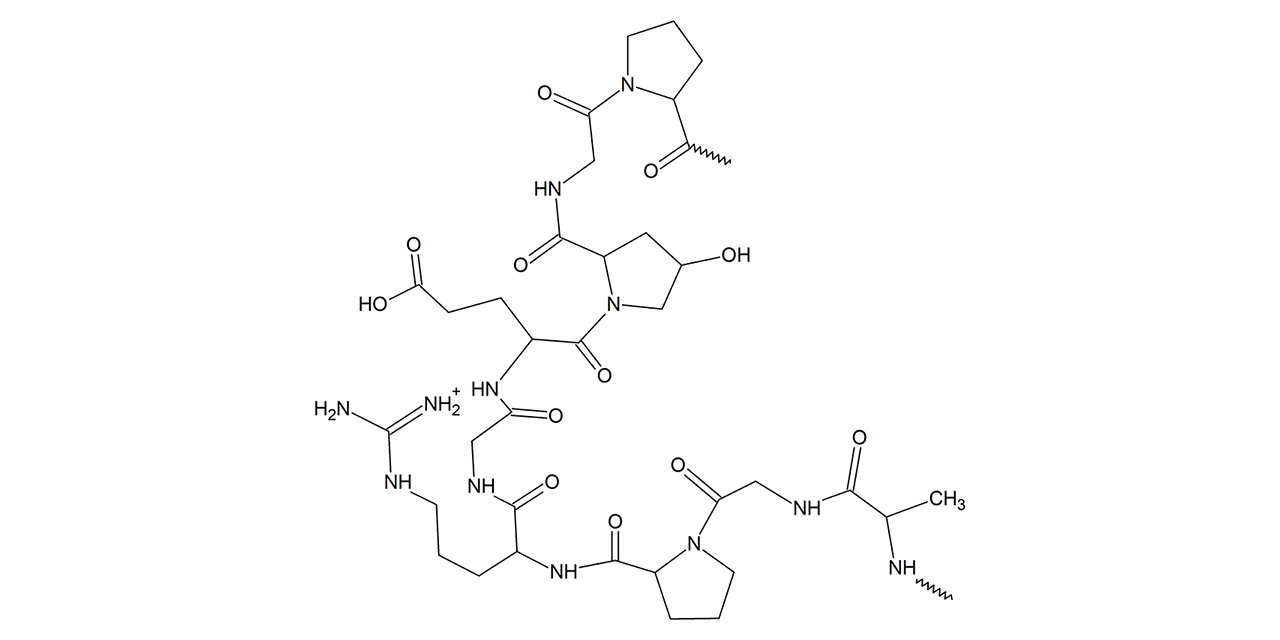
HC linear polycarboxylate
To minimize steric hindrance, diffusion artifacts and nonspecific binding to carbohydrate motifs, XanTec has made efforts to substitute polysaccharides such as CM-Dextran with a better defined polycarboxylate with excellent bioinertness and smaller molecular footprint compared with the relatively bulky saccharides. The linear, unbranched, highly hydrated polymer chains of the HC hydrogel are extremely flexible; thus, they give immobilized ligands a high degree of freedom and the ability to interact in a cooperative manner with larger analytes.
In addition to these biophysical advantages, the HC coatings contain no hydroxyl groups. Therefore, they cannot form ester crosslinks upon EDC/NHS activation, a common side reaction with carboxymethylated carbohydrates. The HC polymers are fully compatible with all immobilization chemistries available for CM-Dextran sensor chips.
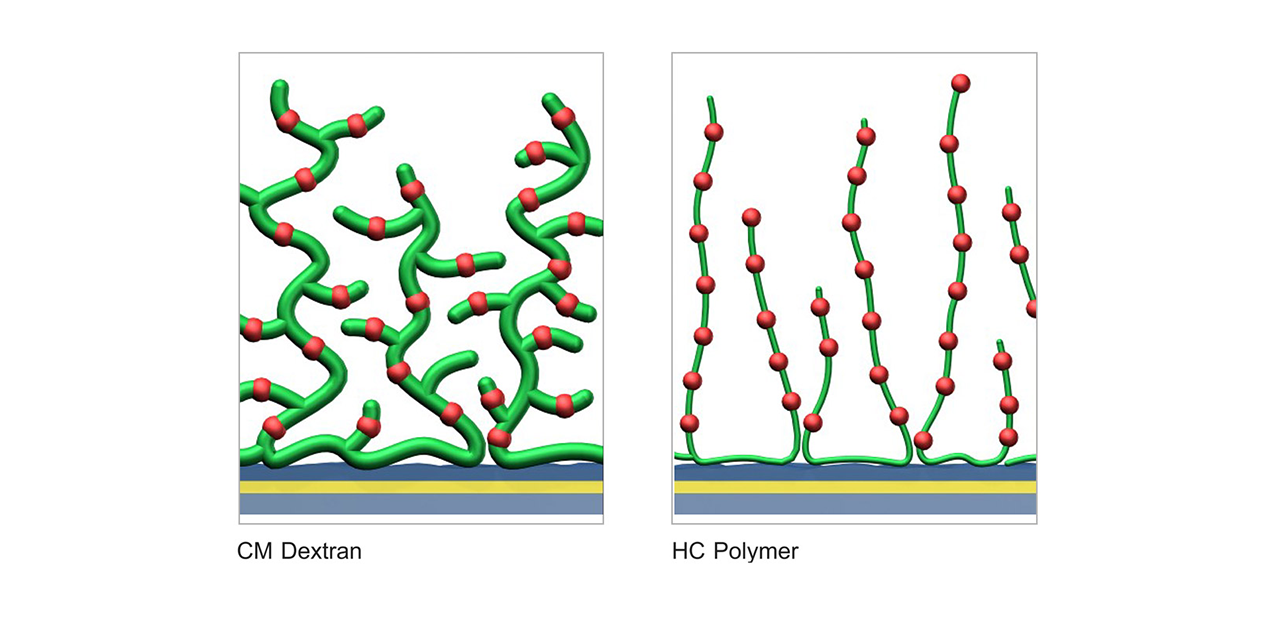
Heparin (HEP)
Heparin is a carbohydrate of the glycosaminoglycan family and consists of variably sulfated repeating disaccharide units. The most common disaccharide unit is composed of a 2-O-sulfated iduronic acid and 6-O-sulfated, N-sulfated glucosamine. Heparin as a sensor chip coating exhibits good bioinertness and can be useful in hematology research as it binds selectively plasma coagulation proteins, nucleic acid enzymes, lipases, and other proteins with specific heparin binding sites like lipoproteins and matrisome-associated proteins (e.g. growth factors and cytokines).
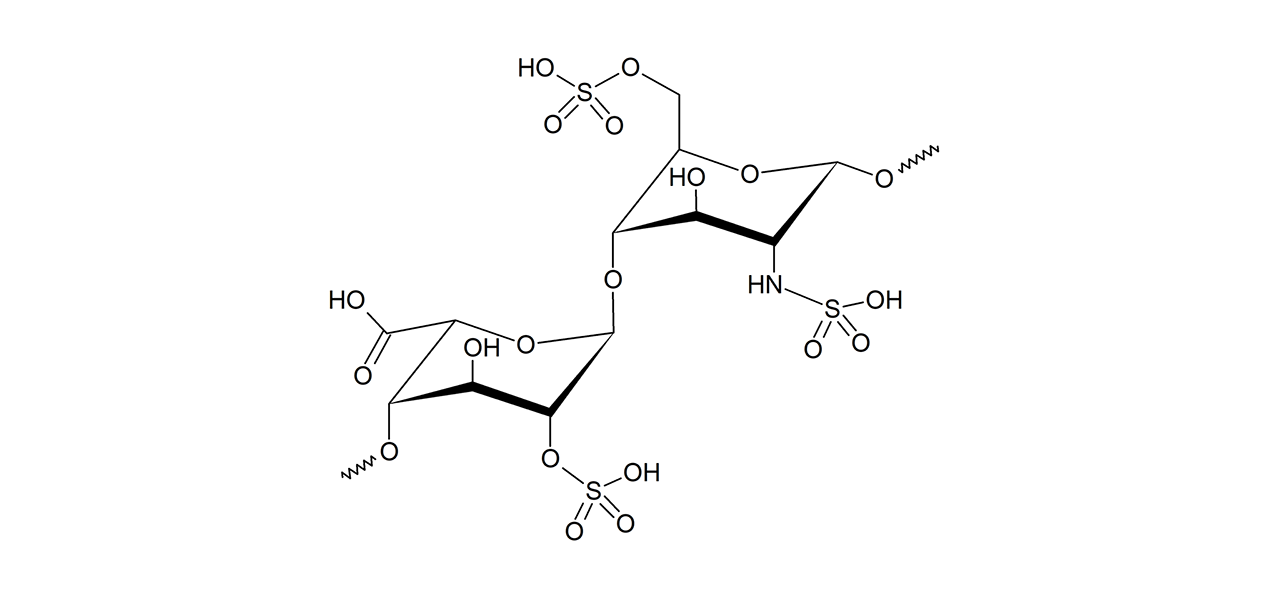
Hydrophobic planar alkyl layer
Dodecanethiol self-assembled monolayer. Contact angle >100°.
This flat, hydrophobic sensor surface facilitates adsorption of lipid monolayers for analysis of interactions involving lipid components. Liposomes adsorb directly onto the sensor surface and form a lipid monolayer with “tails” directed toward the hydrophobic alkyl layer and hydrophilic “heads” directed toward the solution. Unlike the usual strategy for immobilization of biomolecules, this surface has no functional groups suitable for forming covalent bonds.
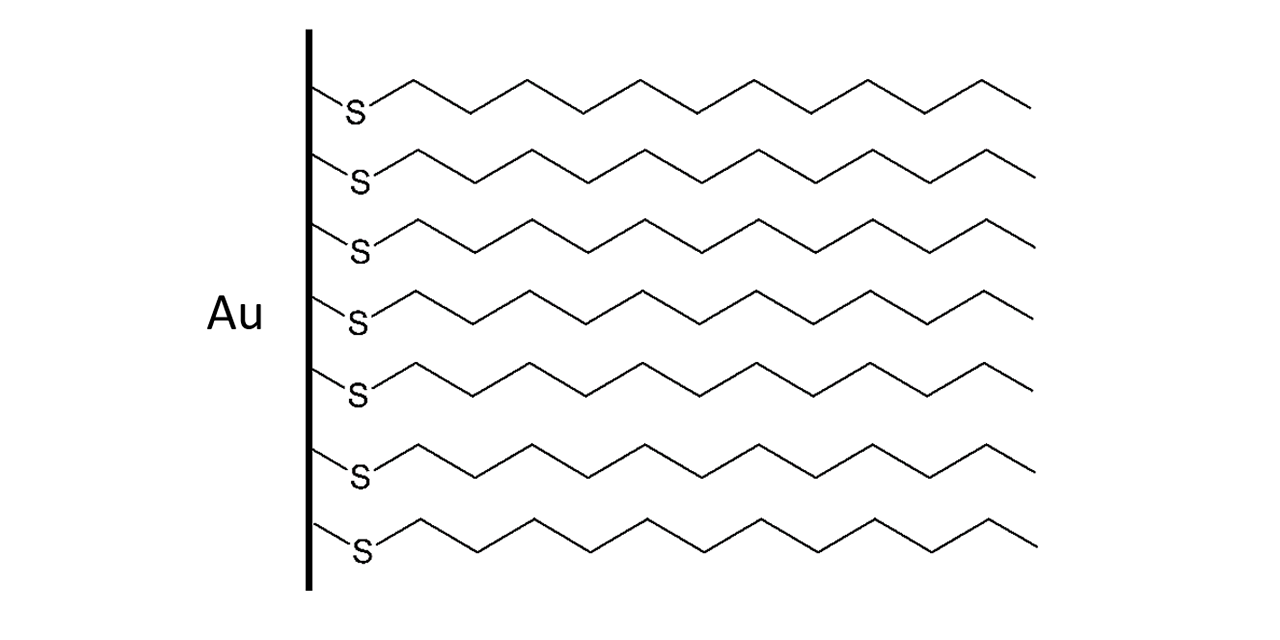
Hyaluronic acid (HY)
yaluronic acid is a strongly hydrated, anionic, nonsulfated glycosaminoglycan, which makes it unique among glycosaminoglycans as they are usually sulfated. The molecular weight of the hyaluronic acid used for the HY coatings lies between 2 and 4 MDa, which corresponds to 15,000–25,000 disaccharide monomers. The hyaluronic acid used is of animal origin (chicken).
Hyaluronic acid is a polymer of disaccharides, themselves composed of D-glucuronic acid and N-acetyl-D-glucosamine, linked via alternating β-(1→4) and β-(1→3) glycosidic bonds. Due to its high biocompatibility and common presence in the extracellular matrix of tissues, hyaluronic acid has been used as the basis for biomaterial scaffolds in tissue engineering.
As hyaluronic acid (HY) hydrogels are bioinert they can be a good choice for use in experiments with ligands/analytes that are prone to nonspecific interactions with CMD and HC surfaces. Further, they can be useful for biocompatibility research and tissue engineering.
Due to the abundant carboxyl groups, HY coatings are fully compatible with all immobilization chemistries available for CM-Dextran sensor chips.

Hydrazide modified linear polycarboxylate (HZHC)
Based on the linear polycarboxylate HC with its superior biocompatibility and diffusion properties, the hydrazide modification of this surface coating offers mild and covalent immobilization of oxidized (poly)saccharides, antibodies through their oxidized carbohydrate side chains, or other molecules with aldehyde or ketone functional groups. The resulting hydrazone bond is stable if formed from ketones; if an aldehyde is used, it is recommended to stabilize the double bond by reduction.

Lipophilic anchors (LD)
The 3D hydrogel LD surface—based on 500-nm carboxymethyl dextran coating—has been optimized to capture whole vesicles and liposomes. Covalently attached to a hydrophilic polymer, lipophilic alkyl chains act as “anchors” for particulates containing lipid membranes.

Planar lipophilic anchors (LP)
On the 2D LP surface, lipophilic alkyl chains are linked to a planar carboxymethyl dextran layer (CMDP surface). In contrast to the hydrophobic alkyl SAM-modified surface (HPP) that immobilizes lipid monolayers, the LP chip is the ideal substrate to prepare supported lipid bilayers. Such 2D structures can be simply prepared by vesicle spreading and mimic the cell membrane. LD and LP surfaces are suitable for analysis of membrane protein–protein interactions or membrane protein–inhibitor interactions.

NTA immobilized on CMD (NiD)
Nitrilotriacetic acid (NTA)-derivatized carboxymethyldextran allows immobilization of polyhistidine (His6)-tagged molecules via Ni2+/NTA chelation. Obvious advantages of this immobilization method are the site-directed, homogenous immobilization of ligands; capture in physiological conditions without significant changes of ionic strength and/or pH; and the ability to regenerate the sensor chip using chelators such as EDTA (350 mM) or imidazole (50 mM) followed by Ni2+ re-loading and immobilization of fresh ligand.
Although this approach is quite popular, a common problem with NTA sensor chips based on carboxymethyldextran is constant leaching of bound ligand from the chip surface, which results in a drifting baseline. If surfaces with a stable baseline are required, we recommend the use of our high-affinity poly-NTA sensor chips.
The use of 50 µM EDTA in running and sample buffers is recommended, as it decreases negative effects caused by contaminating heavy metal ions. Low concentrations of surfactant help to decrease nonspecific binding. HEPES buffer gives better results than Tris or PBS.

Multidentate poly-nitrilotriacetic acid (NTA)-derivatized linear polycarboxylate (NiHC)
NTA-derivatized carboxymethyldextran (CMD) allows immobilization of polyhistidine (His6)-tagged molecules via Ni2+/NTA chelation. Obvious advantages of this immobilization method are the site-directed, homogenous immobilization of ligands; capture in physiological conditions without significant changes of ionic strength and pH; and the ability to regenerate the sensor chip using chelators such as EDTA (350 mM) or imidazole (50 mM) followed by Ni2+ re-loading and immobilization of fresh ligand.
A common problem of NTA-derivatized CMD surfaces is the constant leaching of captured ligand from the chip surface, which results in a drifting baseline. Such drift effects can easily exceed the specific signal and thus represent a major problem, especially when screening small molecules. To address this unwanted effect, XanTec has developed a poly-NTA sensor chip hydrogel coating (HC) based on a flexible polycarboxylate polymer backbone. Compared with the standard CMD–NTA chemistry, these hydrogels, which are available in 30-, 200-, 1000-, and 1500-nm thickness, improve the immobilization stability of captured His6-tagged ligands by 2–3 orders of magnitude (Fig. 1). The higher stability of the bond results from a cooperative effect of several, closely spaced NTA groups.
Therefore, when selecting a sensor chip for immobilization of His6-tagged proteins in critical applications with small molecule analytes, the HC variant should always be preferred to the CMD-based chip. However, the increased density of NTA groups in the HC variant may lead to higher non-specific binding (NSB). Thus, if the analyte is a large protein, or the sample matrix is complex (e.g., it contains serum proteins), the choice should be a CMD-based NTA chip to avoid NSB.
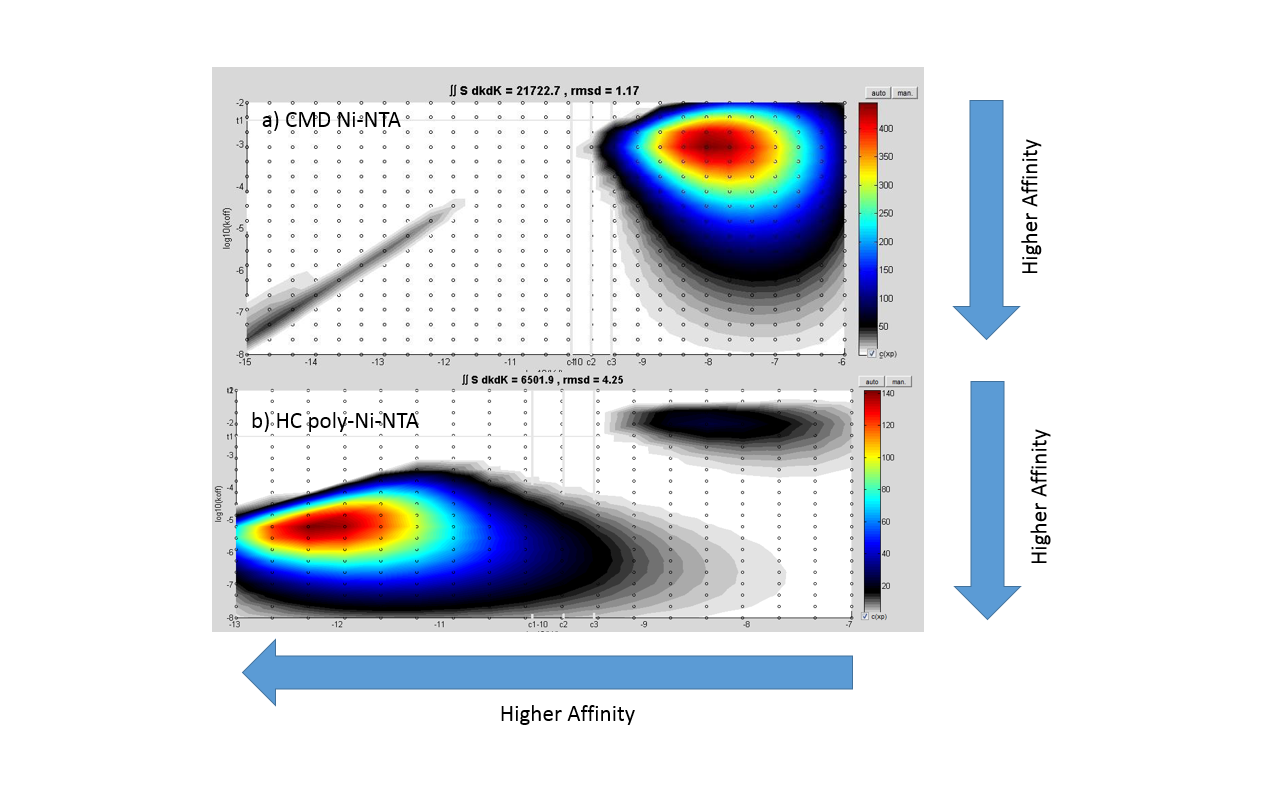
- Nieba, L., Nieba-Axmann, S. E., Persson, A., Hämäläinen, M., Edebratt, F., Hansson, A., ... & Plückthun, A. (1997). BIACORE analysis of histidine-tagged proteins using a chelating NTA sensor chip. Analytical biochemistry, 252(2), 217-228.
- Oshannessy, D. J., Odonnell, K. C., Martin, J., & Brighamburke, M. (1995). Detection and quantitation of hexa-histidine-tagged recombinant proteins on western blots and by a surface plasmon resonance biosensor technique. Analytical biochemistry, 229(1), 119-124.
- Gorshkova, I. I., Svitel, J., Razjouyan, F., & Schuck, P. (2008). Bayesian analysis of heterogeneity in the distribution of binding properties of immobilized surface sites. Langmuir, 24(20), 11577-11586.
Protein A/G on carboxymethyldextran sensor chips
Recombinant fusion protein A/G (Mw around 50 kDa) is pre-immobilized either on a planar surface or in a 3-dimensional hydrogel consisting of carboxymethyldextranCMD). Recombinant protein A/G on these sensor chips consists of seven IgG-binding domains (EDABC–C2C3); the protein A portion (segments E, D, A, B, and C) is from Staphylococcus aureus, and the protein G portion (segments C2 and C3) is a Streptococcal cell wall protein. Sensor surfaces with protein A/G are designed to bind antibodies (IgGs) from different subclasses and species through the heavy chain in the Fc region. The two proteins differ in their binding properties for antibodies from different species and IgG subclasses: protein A is generally preferred for rabbit, pig, dog, and cat IgG, while protein G has better binding capacity for a broader range of mouse and human IgG subclasses (IgG1, IgG2, etc.).
The oriented and reversible immobilization of antibodies ensures high activity of the immobilized IgG without lengthy optimization of immobilization protocols or regeneration conditions. With a Ka of approximately 108 M−1 protein A/G–IgG complexes are sufficiently stable to yield surfaces with low drift that are suitable for a broad range of applications. Binding to fusion protein A/G is less pH-dependent than to either protein A or protein G alone. However, incubation with denaturing buffers or at slightly acidic or alkaline pH will break the interaction and results in quantitative regeneration of the chip surface, which can be repeated several hundred times.1
- J. Quinn, P. Patel, B. Fitzpatrick, B. Manning, P. Dillon, S. Daly, R. O’Kennedy, M. Alcocer, H. Lee, M. Morgan and K. Lang, Biosens. Bioelectron., 1999, 14, 587–595.
Protein A/G on linear polycarboxylate polymer (HC)
Recombinant fusion protein A/G (Mw around 50 kDa) is pre-immobilized in a 3-dimensional hydrogel consisting of a linear polycarboxylate with higher flexibility in its polymer chains than carboxymethyldextran. Recombinant protein A/G on these sensor chips consists of seven IgG-binding domains (EDABC–C2C3); the protein A portion (segments E, D, A, B, and C) is from Staphylococcus aureus, and the protein G portion (segments C2 and C3) is is a Streptococcal cell wall protein. Sensor surfaces with protein A/G are designed to bind antibodies (IgGs) from different subclasses and species through the heavy chain in the Fc region. The two proteins differ in their binding properties for antibodies from different species and IgG subclasses: protein A is generally preferred for rabbit, pig, dog, and cat IgG, while protein G has better binding capacity for a broader range of mouse and human IgG subclasses (IgG1, IgG2, etc.).
The oriented and reversible immobilization of antibodies ensures high activity of the immobilized IgG without lengthy optimization of immobilization protocols or regeneration conditions. With a Ka of approximately 108 M−1 protein A/G–IgG complexes are sufficiently stable to yield surfaces with low drift that are suitable for a broad range of applications. Binding to fusion protein A/G is less pH-dependent than to either protein A or protein G alone. However, incubation with denaturing buffers or at slightly acidic or alkaline pH will break the interaction and results in quantitative regeneration of the chip surface, which can be repeated several hundred times.1
- J. Quinn, P. Patel, B. Fitzpatrick, B. Manning, P. Dillon, S. Daly, R. O’Kennedy, M. Alcocer, H. Lee, M. Morgan and K. Lang, Biosens. Bioelectron., 1999, 14, 587–595.
Pectin (PC)
Pectins, also known as pectic polysaccharides, are structural heteropolysaccharides contained in the primary cell walls of terrestrial plants. Isolated pectin, which is rich in galacturonic acid, has a typical molecular weight of 60,000–100,000 Da, varying according to the extraction conditions and origin.
Pectin hydrogels are useful chip surfaces with low nonspecific background for the analysis of biomolecules expressed in plants.
Due to the abundant carboxyl groups, PC coatings are fully compatible with all immobilization chemistries available for CM-Dextran sensor chips.

Polyethylene glycol (PEG)
The PEG sensor surface coating is a hydrophilic, polar surface based on a dense brush of 4-kDa PEG. The low polymer–water interfacial energy value results in good resistance to protein adsorption and cell adhesion.
The PEG surface is hydroxyl terminated and uncharged. It can be activated by oxidation to aldehydes and subsequent Schiff base coupling/reductive amination, or by (bis)epoxy activation. As there will not be any electrostatic preconcentration, high ligand concentrations are necessary to reach a sufficient level of immobilization.
Due to the terminal functionalization of the PEG chains, this surface is useful for the preparation of ligand monolayers on a well-stabilized, semi-hydrated and passive spacer layer.
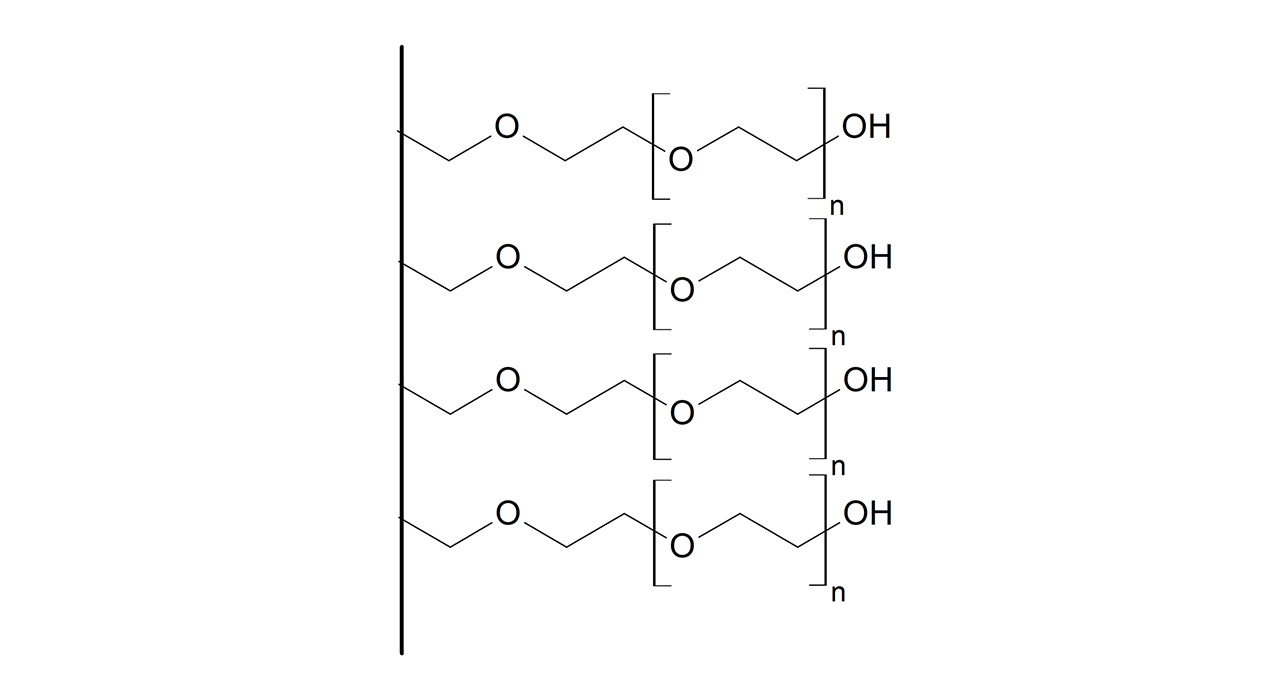
Poly-L-lysine (PLY)
Pure poly-L-lysine brush, 50–100 nm thick. High positive charge density. Sensor chips coated with PLY can be used for reverse electrostatic preconcentration and immobilization of amino reactive, negatively-charged ligands, polymers or biological structures, such as cells and tissue fragments. Note that the nonspecific background of this surface can be significant, as most biomolecules carry a negative charge at physiological pH.
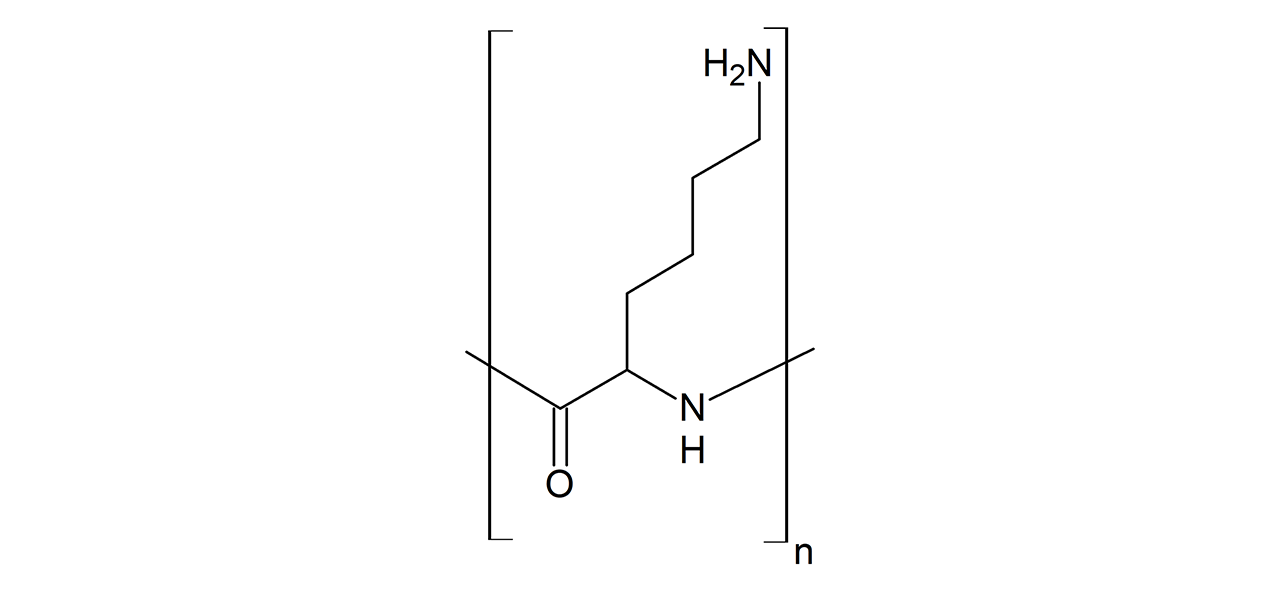
Streptavidin derivatized carboxymethyldextran (SAD)
The streptavidin-modified carboxymethyl dextran matrix consists of covalently bound streptavidin in a biocompatible, hydrophilic polysaccharide. The 55-kDa streptavidin tetramer is composed of four identical polypeptide chains and is dissociated into monomers before ligand immobilization, which prevents baseline drift and leaching during the ligand regeneration steps.
Due to the mechanical rigidity of the polymer backbone, combined with branching and pronounced hydration, the movement of immobilized ligands in SAD polysaccharide hydrogels is limited. Therefore, SAD hydrogels are a good regime if the focus is on monovalent interactions. If immobilized ligands are expected to interact in a cooperative manner, the more flexible SAHC hydrogel should be used instead.
Streptavidin derivatized HC polycarboxylate (SAHC)
The streptavidin-modified HC matrix consists of covalently bound streptavidin in a bioinert, extremely hydrated, strictly linear polycarboxylate. The 55-kDa streptavidin tetramer is composed of four identical polypeptide chains and is dissociated into monomers before ligand immobilization, which prevents baseline drift and leaching during the ligand regeneration steps.
SAHC hydrogels exhibit a very low nonspecific background. The small molecular footprint of the HC polymer chains leaves sufficient space for unhindered diffusion of the analyte, even after immobilization of voluminous ligands. The polymer chains of the SAHC hydrogel are extremely flexible, giving immobilized ligands a high degree of freedom and the ability to interact in a cooperative manner with large analytes.
Streptavidin immobilized on 2D carboxymethyldextran (SAP)
The streptavidin-modified planar (two-dimensional, 2D) carboxymethyldextran matrix consists of covalently-bound streptavidin on a thin (<5 nm), biocompatible, hydrophilic polysaccharide cushion. The 55-kDa streptavidin tetramer is composed of identical polypeptide chains that are dissociated into monomers before ligand immobilization to prevent baseline drift and leaching during the ligand regeneration steps.
Because of the planar nature of the SAP structure, the immobilization capacity is significantly lower than that of 3D streptavidin coatings (LINK SAD, SAHC). However, the planar variant has significant advantages over the 3D hydrogels in the kinetic measurement of larger analytes such as antibodies. Because of the absence of flexible polymer strands, the immobilized ligands are spatially resolved on the surface and mainly monovalent. Furthermore, analytes on the planar SAP structure can diffuse unhindered to, and dissociate from, the surface without steric hindrance caused by 3D matrices. Moreover, analyte re-binding during the dissociation phase does not occur. All these factors mean that kinetic data obtained in measurements on the SAP surface are more reliable than comparable measurements made using 3D hydrogels.
Tetraethylene glycol (TEG)
Tetraethylene glycol (TEG) is a member of a homologous series of dihydroxy alcohols and is well known for its biocompatibility. The sensor chip coating consists of a TEG self-assembled monolayer (SAM), which exclusively presents hydroxyl groups on the surface. Sensor chips with TEG SAMs have the advantage that the interactions take place very close to the gold surface, and thus in the most sensitive part of the evanescent field, resulting in acceptable SPR signals with medium-weight molecules as analytes. The TEG surface is ideal for the development of biocompatible surfaces, and can be used as a reference because of its well-documented ability to suppress protein adsorption and plasma activation. Furthermore, TEG can be modified chemically to alter the properties of the surface1, 2. Use of modified TEG sensor chips is of interest in the pharmaceutical and cosmetics industries, as TEG is often used as an additive in their products.
For TEG-based sensor chips with some carboxyl groups on the surface, which allow easy and gentle immobilization via EDC/NHS chemistry, please select CMTEG sensor chips.

- Cha, T., Guo, A., Jun, Y., Pei, D., & Zhu, X. Y. (2004). Immobilization of oriented protein molecules on poly (ethylene glycol)‐coated Si (111). Proteomics, 4, 1965–1976.
- Piehler, J., Brecht, A., Valiokas, R., Liedberg, B., & Gauglitz, G. (2000). A high-density poly (ethylene glycol) polymer brush for immobilization on glass-type surfaces. Biosensors and Bioelectronics, 15, 473–481.
Disulfide modified hydrogels (THC, TD, TP)
THC, TD and TP sensor chips are coated with a disulfide derivatized bioinert hydrogel respectively 2D coating based either on carboxymethyldextran or the linear polycarboxylate HC. Covalent disulfide coupling requires reduction of surface and ligand disulfides and activation of the formed surface thiol groups with pyridyl disulfide before ligand injection. All THC, TD and TP coatings also contain carboxyl groups for electrostatic preconcentration of protein ligands.
UV-reactive sensor chip surfaces
The UV crosslinking surface makes immobilization very easy. Let your molecule of interest preconcentrate on the surface, then irradiate with near-UV light. A high immobilization yield and an immobilization chemistry that targets many functional groups such as hydroxyls and amines, as well as less reactive C–H and C–C bonds, allow the immobilization of carbohydrates and small molecules which are not accessible through traditional NHS/amine coupling. The wavelength and UV dose required for good coupling yields do not affect even sensitive ligands.
The UV chemistry is compatible with the Reichert 2SPR system equipped with a UV flow cell, and SPRi instruments using external spotters. Alternatively, it is possible to undock a sensor chip after ligand preconcentration, irradiate the surface with UV, and reinsert the chip to continue the experiment.
Zwitterionic surfaces (ZC, ZCX, ZCC)
This unique hydrogel is a derivative of the robust C polycarboxylate. It has been developed for covalent immobilization of negatively charged molecules such as DNA, carbohydrates and acidic proteins at physiological pH, employing a reverse electrostatic preconcentration effect. In contrast with the usually polyanionic surfaces for covalent immobilization, this surface exhibits a temporarily positive net charge during preconcentration and coupling of the negatively charged ligand. After coupling and quenching of the active NHS esters, the net charge becomes slightly negative again, thus stabilizing the surface against nonspecific interactions.
The zwitterionic hydrogel is available as an NHS-preactivated surface (ZCX) or a non-activated surface (ZC) to be activated in situ with standard EDC/NHS chemistry.
To determine preconcentration conditions(preconcentration scouting), we offer the positively charged ZCC version, which mimics the NHS activated surface. However, the ZCC surface is unreactive, so the ligand can be eluted multiple times until optimization of the coupling parameters has been completed.
